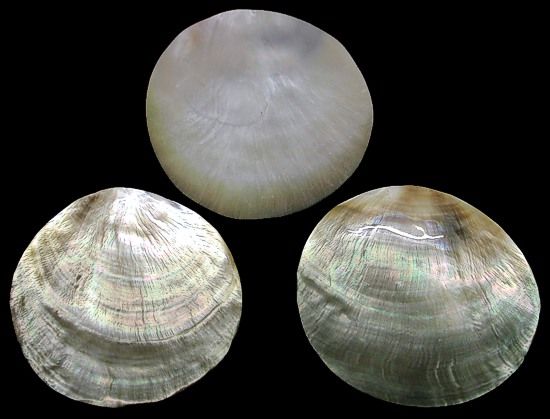One polished bivalve Black Lip Oyster Shell measuring 4 to 4 1/2 inches *****
One polished bivalve Black Lip Oyster Shell measuring 4 to 4 1/2 inches.
Orders usually process within 2 to 5 business days.
Email us at ja1@mindspring.com Make Your Selections and Shipping Preference. We Will Email You the amount of the Shipping Cost. When you receive the shipping cost go back into Shells of Aquarius and click into Purchase Shipping Label. There you will find UPS or USPS. Click into the option you decided on and make your payment. Your order will ship when shipping payment is received.
Pinctada margaritifera common name BLACK LIP OYSTER
This is a species of pearl oyster, a saltwater mollusk, a marine bivalve mollusk in the family Pteriidae. They are common in the Indo-Pacific within tropical coral reefs.
The ability of P. margaritifera to produce pearls means that the species is a valuable resource to humans. The oysters are harvested wild from coral reefs and are also commonly grown in aquaculture, in the Indo-Pacific region.
The common name of this species refers to the black coloring along the margins of the interior of the shell. Externally the shell is dark grayish brown or green, though white spots are common across the shell. Adults usually reach between 8 to 10 inches in height. A distinctive feature of the species is that the hinge has no teeth.
Pinctada margaritifera occupies a wide range throughout the Persian Gulf, Red Sea, Sudan, Papua New Guinea, Australia, French Polynesia, Cook Islands, Indonesia, Andaman and Nicobar Islands, Southwestern part of the Indian Ocean, Japan and the Pacific Ocean, and various locations on the coast of India.
The pearl oyster attaches itself to barnacles and other hard substrates via a byssus. They thrive at intertidal and subtidal zones, at depths from the low tide to up to 27 feet. Habitats are usually characterized as oligotrophic and having low turbidity. Other species, including sponges, hydroids, polychaetes, lamellibranchs, amphipods, decapods, echinoderms, and fishes, usually have close relationships with pearl oyster beds.
This species is commonly farmed and harvested for pearls, and there is general consensus that the quality of pearls from Pinctada margaritifera is the highest quality out of all the pearl oysters. Pearls form when a parasite or other irritant enters into the oyster and nacre is released by the oyster to coat the object, eventually creating a small pearl. It is a popular myth that sand is a common irritant that induces pearl nucleation, however, this is very rarely, if ever, the case. Bivalves are able to flush sand from their bodies extremely effectively, and studies of pearl nuclei have shown that the overwhelming majority form from parasitic incursion, other organic irritants, or even tissue damage. The oyster's release of the nacre serves as an adaptation of the immune system to isolate the invasive particle and irritation. P. margaritifera in particular produces gray or black pearls.
Scientific classification
Domain: Eukaryota
Kingdom: Animalia
Phylum: Mollusca
Class: Bivalvia
Order: Pteriida
Family: Pteriidae
Genus: Pinctada
Species: P. margaritifera
